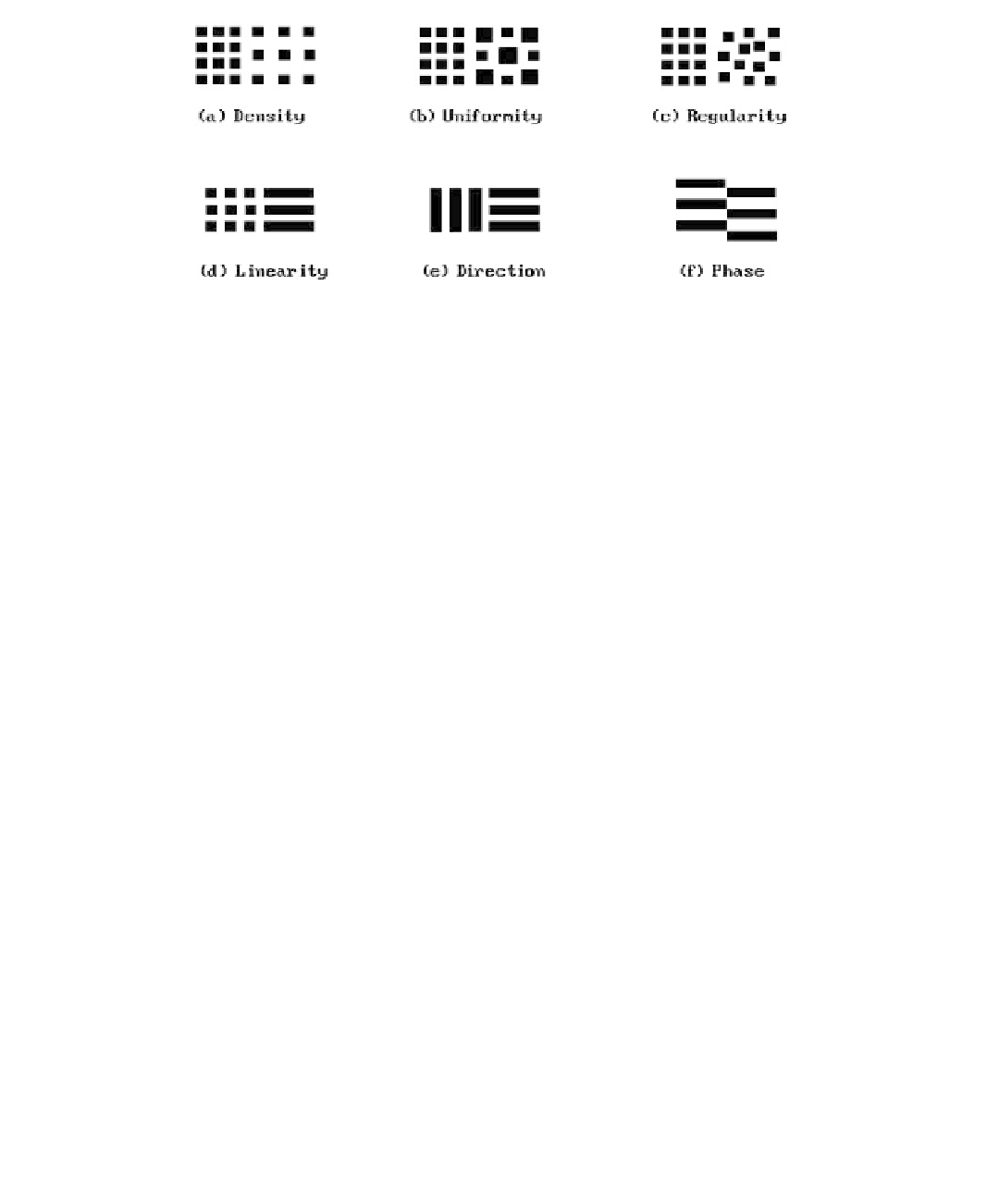Graphics Reference
In-Depth Information
Figure 9.13.
Synthetic textures.
9.6
Texture and Texture Mappings
Surfaces are usually
not
homogeneous with respect to any particular property such
as color, intensity, etc., but they usually have a more or less uniform pattern that is
called the
visual texture
. This pattern could be generated by
physical texture
, such as
a rough wall surface, or
markings
, as on wallpaper. Sometimes a collection of objects
is viewed as one, as in the case of a brick wall, and then the pattern in each deter-
mines the texture of the whole. Texture is a useful concept in understanding scenes.
Without texture pictures do not look right.
What exactly is meant by texture? The characteristics of synthetic textures are
easiest to explain. Examples of these are shown in Figure 9.13. It is much harder in
case of natural phenomena such as sand, straw, wood, etc., but there is some unifor-
mity. One studies texture as a property of a pattern that is uniform in a
statistical
or
structural
sense. There is a nice discussion of texture in [Neva82]. We summarize a
few of the main points.
Statistical Texture Measures.
Such measures are motivated by a lack of a simple
pattern. One looks for average properties that are invariant over a region. An example
of this is the probability distribution of single pixel attributes, such as, the mean and
variance of its intensity function. Another is the use of histograms of individual pixel
attributes. Better yet, one can try to detect the presence of certain features, such as
the density of edges, and then compute the mean, variance, etc., of these to distin-
guish between “course” and “fine” textures. The Fourier transform has also been used
to look for peaks since textures are patterns. Using such measures one can generate
symbolic descriptions like “bloblike,” “homogeneous,” “monodirectional,” or “bidi-
rectional.” An example of a fancier measure is a function of the type
(
)
=
p i j d
,, ,q
probability of a pair of pixels separated by a distance d in
direction
the
q
w
ith
intensities i and j
Such measures have been used successfully for wood, grass, corn, water, etc.

